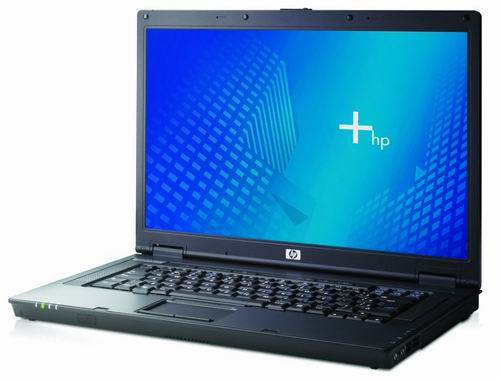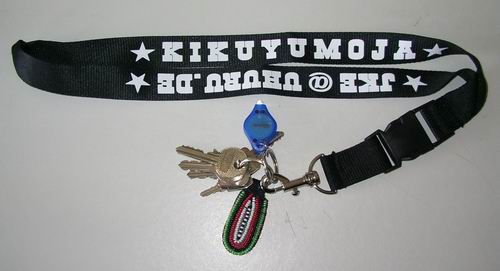I have been away from the blogosphere for a while as I am currently sitting for some exams – and spent a great time of the month looking for a decent, well-equipped and mobile notebook/laptop computer.
Remember my post on this Acer Aspire 5652 WLMi? Well, I’ve meanwhile managed to test it for longer and realized it’s actually of such a low quality – things like cheap plastic frames that bend when you hold the machine on one side, too much play between the screen and the bottom piece, and finally a weight slightly over 3kgs are just k.o.-criterias that remove Acer’s 5652 from my very own Top 10 notebook list. And this, although it has almost EVERYTHING you could ever want to have in a notebook in 2006 for a reasonable price (~ EUR 1150,-). But then, 3kgs and cheap materials aren’t good enough for mobile use. No wonder most distributors rate it as a so-called “desktop replacement”.
So I learned from that and realized I should narrow my search down to notebooks (I call them notebooks, but you’re right, they are actually laptops – as in ~ “computers that end up on your laps”…well, JFYIO..) which match the following criteria:
- Intel® Pentium-M or – even better – Duo T2300/T2400 etc (1,6 – 2,0 GHz)
- 80 – 120 GB HDD @ 5400 upm
- 1024 MB DDR2 RAM @533 or 667 MHz
- Gfx either Intel’s shared solution or an ATI X600/700 or even Nvidia GeForce 7600
- WLAN a/b/g & BLUETOOTH 2.0 (yes, BT IS important), Firewire!!, USB min. 3x,
- internal mic for use with Skype & Co. and good internal loudspeakers
- PCMCIA/PC-Card or ExpressCard slot (btw, who uses ExpressCards??)
- VGA out, DVI is optional
- (Double Layer) 8x DVD Burner
- Card-Reader that does at least SD and MMC (though, yes, this could also be achieved by using a PCMCIA Card Reader)
- a decent keyboard <== one of the most important interfaces there is
- weight below 2.7 kgs
- battery runtime of at least 3h or even more
- price: EUR 1200,- EUR (~US-$ 1.500) maximum
Now, with this list in mind, I came across a number of interesting notebooks whereby I of course always prefered the ones with the newer Duo Core CPUs and overall good perfomance for the price.
Currently, my list includes the following models
13.3″ & 14,1” TFT @ 1280×800
- BenQ S73G
(T2400, 80GB, 512MB, ATI X1600, 2.3kgs, approx. 3.5h battery runtime, ~ EUR 1200,-)
=> the downsides?: no hooks for the display (why??), available as of August 2006
- LENOVO (IBM) 3000 N100
(T2400, 100 GB, 1024MB, Gfx shared, Webcam, fingerprint reader, 2.5 kgs, ~ 3.3h, ~ EUR 1100,-)
=> my current favourite, BUT no disengageabooool touchpad + still need to see and feel this one in live action as it is said to be a bit bulky like those ThinkPad Z60m & Z60t….
- HP nc 6400
(T2400, 80 GB, 512 MB, Gfx shared, ~ 2.0 kgs, 4-5h, ~ EUR 1.350)
=> the keyboard on HPs is just awesome. I love it! Even, this machine normally sells for EUR 2.xxx but there’s this one model they’ve put down to EUR 1.350 which is still a lot for a normal notebook (ok, it’s a business edition). I might follow this one as the keyboard alone is a great reason to go and get it. Plus the weight and size makes this one really mobile. The RAM can be upgraded and the harddisk is ok at 80 gigs although of course the bigger the better…
- MacBook
(T2500, 60GB, 512MB, 2.3kgs, 4h, EUR 1200,-)
==> put a two-button touchpad on a MacBook and I’ll switch to the Mac (like I did when I was using Atari 1040STF back in the early 1990s)

Lenovo 3000 N100 series
Why no Dell 640m or even Latitude D620? Because the 640m/e1405 doesn’t come with an internal mic – a part which costs about EUR 0,30 during production and still isn’t included. WTF, Dell?? And the D620 does not have a Firewire port. In fact, I even called Dell Germany and asked them for some details but their sales staff apparently is just as incompetent as the hinge construction on the Dell C600 series I’ve been
talking about earlier. Student’s discount on DELL laptops is 7% on the Latitude series, btw. Might check back on them, although I think their laptops actually fall into the desktop replacement category – even those small ones like the bulky 640m/e1405.
15.0 & 15.4″ TFTs
Acer Aspire 5652
(T2300, 120 GB, 1024MB, Nvidia GeForce 7600, 2.9 kgs, approx 3.5h, EUR 1150,-)
=> as described above – a perfect machine for desktop use but too heavy and fragile
Asus A6J/T series
(similiar to the Acer Aspire 5xxx)
=> no disengageable touchpad, gets quite hot during use, quality is better than Acer but then also way too heavy for mobile use and the 14.1″ Asus notebooks only come with a cheap Core Solo CPU, some Asus notebooks come with a webcam, overall battery runtime mostly below 3h…
FSC Amilo Pi 1536
(T2300, 120 GB, 1024MB, ATI X1400, 3.1 Kgs, 2h, ~ EUR 1.000)
=> FSC Amilo M series used to be great on battery runtime (Mbuzimoja has one with 4.5h) but the current models only deliver 2hrs (which is nothing) and the 4-5 hrs models are either too expensive or too basic.
HP Pavilion 5xxx series
(same as above, lakini with AMD Turion CPUs & Co. , approx 3kgs, 3h)
=> too heavy (desktop replacements) but again, well equipped and with a perfect keyboard.
HP nx7400
(T2400, 100, 1024, only 2.5kgs, 4h, EUR 1100,-)
=> nice business notebook, was a great choice until I realized it doesn’t come with a card reader (well, I could live with that and install the PC Card reader) and other minority extras. Also, features a great keyboard and is very light despite it’s size. No extra security functions like fingerprint reader as featured on other HP & IBM business notebooks but uhhhm, well, is that really important?
HP nx8220
(Pentium M 750, 80GB, 1024 MB (@400MHz), ATI X600, 2.6 kgs, 4hrs, ~ EUR 1000,-)
=> Now this is the best deal for ppl who want a mobile notebook and can’t live with the Samsung X20. The series is out of production, though, so if you’re into this one – rush for it! HP also offers student’s discounts on them. What I like about these business notebooks is their slim line, weight, performance and various equipment they offer – like an extra battery that powers this notebook up to 10, 12 or even 16hrs. However, the CPU & technology is old so I wouldn’t want to spend much on this one. Something like EUR 900,- would be my maximum price on this.
Lenovo (IBM) Z60m
(Pentium M 760, 100 GB, 1024, ATI X600, 2,7 kgs, 4h, EUR 1200,- )
=> Again, an older CPU and 2.7kgs are a bit too much weight – but hey, it’s a ThinkPad! Despite of all the security benefits you get with a ThinkPad, it’s very durable aaaaannnd you can get spare parts in every corner of the world.
Despite it’s older technology it is – among other (better and older) ThinkPads a good choice for those ones who want to be on the safe side. However, some ppl complain about this machine being too bulky – and the Z60t version is said to have a poor lcd scren. The Z60m is also availble with a cheap Celeron CPU @ 1.5 GHz which sells for something like EUR 700,- — that’s like buying a Mercedes S600 with a 1.4 Hyundai motor.
Lenovo (IBM) Z61m
(T2500, 100GB, 1024MB, ATI X1400, 1680×1050 WSXGA+, 3.1kgs, up to 6h, EUR 1500,-)
=> there’s this student edition of the Z61m (successor to the Z60m series) that comes with just about everything in a perfect ThinkPad shell – but lacks Bluetooth. Also, the price is shocking + I wonder who told those IBM engineers to make use of ATI X1400 gfx cards? They are soooo battery consuming… =verdict: too heavy, too expensive.
MSI Megabook M660
(Barebone with T2400, 100 GB, 1024MB, 3kgs, 3h, EUR 1200,-)
=> MSI Computer Inc. sells great hardware but what about their notebooks? There you have it…plus, it’s too heavy and I just can’t trust those given battery runtimes. Even their 14.1″ & 12.1″ range isn’t that great although cheap.
Samsung X20 XVM 1730 V
(Pentium M 740, 80 GB, 1024 MB, 15″ 1400×1050 SXGA+ TFT, 2.4 kgs, 3-5h, EUR 1099,-)
=> a very basic, very thin and light notebook that’s perfect for mobile use + it comes with a brilliant screen at SXGA+ resolution but lacks any extra such as Bluetooth and it’s card reader doesn’t like the MMCard of my Nokia mobile. I had this machine in mind when I started my search for decent notebooks and I know of three people here that own it and are very happy with the machine. After all, with its weight and battery runtime it comes very close to the actual need of having a mobile computer that’s easy to carry and independent. Also, I like the disengageable touchpad (there’s this button right in between the two keys of the touchpad). Make this machine 200,- EURs cheaper and I’ll go for it.
Samsung X60 Chane
(T2300, 80GB, 1024MB, Gfx shared, 2.5kgs, 4-5h, 1500,- EUR)
=> One of the few Samsungs on the local market that comes with a Bluetooth module and still features Samsung’s beautiful industrial design. A nice notebook that costs a lot of money for the performance it offers. Would only go for this because of the weight and the battery runtime (indicated as 6hrs, but who trusts them…) but the price is a knock-out.
Samsung R series
(Pentium M 740, 80GB, 512 MB, etc., EUR 1000,-)
=> nice, but without Bluetooth and with limited extras.
Sony Vaio VGN-FE21M
(T2300, 100 GB, 1024MB, NvidiaGeforce 7600, 2.8 kgs, 3h, EUR 1400,-)
=> a nice, slim, despite it’s weight still portable notebook with a brilliant – the best – LCD display but no disengageable touchpad. And this, a missing function/key to disengage the touchpad on a SONY notebook is a clear no-go! Plus, it is said to become very hot and has some other flaws which it tries to overplay with its beautiful design and awesome lcd screen.
——
The bottom line? There’s no perfect notebook on the market as of yet, and I guess I’ll still have to wait for more and more Intel Duo Core notebooks becoming available which will lower the prices.
The problem, it seems to be, is that those new laptops with the Duo Core or AMD’s Turion CPU consume even more power than those older Pentium M CPUs we have seen on the market for something like 3 years.
Hence, what is needed is a powerful Duo Core laptop that is as power-saving as the Pentium M technology and delivers battery runtime of 4-5 hours. BECAUSE if it doesn’t – and currently most DuoCore laptops only deliver 3h (at the same price range) – it seems to be wiser to stick to Pentium M plattform at the moment.
Now, is that the progress we’ve been waiting for?
Also, I’ve put this up on my blog so that those die-hard ThinkPad and HP users out there might convince me to settle for an older ThinkPad (I might have missed out) or even share their experience with the new Lenovo 3000 series & HP nx 7400 / nc6400 series. Thx!
@Mbuzimoja: You know I really envy you on this 4.5h perfomance of your old FSC Amilo M 7400…
p.s.: computers are SUCH a waste of time…




